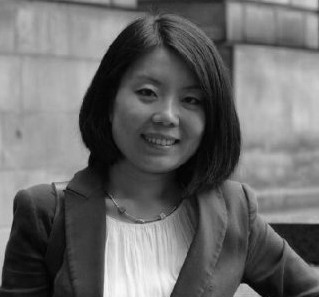
In this post, Dr Jingyi Li questions what diversity means for learning and teaching in a PGT setting. Jingyi is a Senior Teaching Fellow and Programme Director for MSc Education (All Pathways) in the Moray House School of Education. This is the fourth post of the Learning & Teaching Enhancement theme: “Focus on the internationalisation of teaching and learning“.
‘Diversity’, at the Postgraduate Teaching (PGT) level in higher education, often unquestionably refers to ‘diversity by nationality’ only. It demonstrates a very different discourse to the intention of ‘widening participation’ at UG level, where the criteria are set up around ‘(un)privilege’ and ‘(dis)advantage’, or institution’s policy on diversity and inclusion, which aims at challenging barriers for social justice. There remains a lack of data and attention on other dimensions of diversity in PGT, such as age, disability, gender, religion, academic background and learning style.
Unfortunately, a one-sided conceptualisation of diversity has implications for learning and teaching in an internationalised higher education setting. In my experience as a Programme Director, I have been in planning meetings with colleagues and students where discussions have centred around the ‘lack of diversity’ in PGT programmes. Although beyond the scope of this blog post, it is important to point out briefly that the spread of international students can be linked directly to the wider context of international student recruitment globally. Students from mainland China make up the largest proportion of internationally mobile students. This relates to discourses around market liberalisation and the marketisation of international higher education widely discussed by several authors.
An international classroom with learners from different parts of the world can facilitate opportunities for intercultural encounters. Such intercultural encounters, as discussed previously in Omolabake Fakunle’s Teaching Matters blogpost, can create a learning opportunity for staff and students to examine their critical consciousness, culture sensitivity, and reflexivity. In addition, my teaching experience in the past few years informs my perspective that it is necessary to unpack notions of what seems to be concerns about a ‘lack of diversity’ in PGT programme. The concerns that have been raised by students from both within the Chinese group and beyond relates to perceived impact on the quality of the programme with the presence of ‘too many’ Chinese students.
These concerns are centred around persisting notions of the ‘Chinese learner’ as silent in class or their lack of ability to speak fluent English. It seems ironic that the bilingual or multilingual skills of international students who use English as their second language seem to be taken for granted by both members within and outside the national groups. This brings to the classroom manifestations of notions around Western superiority in international higher education.
A focus on ‘diversity by nationality’ runs a risk of overlooking other dimensions of diversity and over-simplifying some of the tensions in PGT. Language anxiety and the process of adjusting to an academic system that is completely alien based on students’ past experience may be interpreted as lacking motivation or sufficient subject knowledge.
I had some valuable opportunities to communicate with a few students (including students from China), who raised concerns as described above. I realised part of the frustration came from the student perception that some of their peers are more able to afford the high tuition fees and living costs, but they lack a motivation to study. Students who had worked for years or exhausted their family savings to study in the UK may perceive that their peers who do not actively participate in class do not treasure the opportunity the way they do. Communicating with the students provided more insight into the multidimensional context of these concerns.
Students’ perceived lack of motivation or lack of engagement in oral discussion in classes sometimes has been found to be due to misinterpretation or as a result of different ways of learning. This contradicts generalisation of behaviour attributed to culture. Relatedly, stereotypical assumption that international PGT students, especially Chinese students, come from comfortable families underpins the need for both students and staff to unpack diversity in a multicultural educational community.
In my view, to effectively create an inclusive learning environment for all, we need a discursive change in understanding diversity in PGT. It requires commitment and actions from various actors in a university, including management, frontline tutors, and the student community. A dialogic approach would be required to allow a space to ‘learn, and ‘unlearn’.
This academic year, supported by school management and initiatives, MSc Education (All Pathways) placed ‘diversity and inclusion’ as a matter of priority. We are making on-going efforts to communicate our commitment to ‘value all languages and cultures, acknowledge various learning styles, and to create an inclusive learning environment’ with students. While it is too early to draw a conclusion on the impact of these initiatives, it is rather positive that they certainly give confidence to staff and students to join discussions on relevant issues. I do not underestimate either the enormity or the importance of the task that lies ahead of us. At the same time, I can envision a transformative change on the horizon!
 Jingyi li
Jingyi li
Jingyi is a Senior Teaching Fellow and Programme Director for MSc Education (All Pathways) in the Moray House School of Education. She is teaching, and course organising the Curriculum: Context, Change and Development, and has taught a range of PGT courses relating to education policy, comparative and international education. She also actively works with the ethnic minority community in Scotland to promote heritage languages.
Her research interest lies in curriculum studies, citizenship education and international education policy development. She is currently leading a project funded by the Student Experience Grants on co-creating hybrid curriculum and connect PGT classroom with the world. Staff Profile: https://www.ed.ac.uk/profile/jingyi-li.
Twitter handle: @JliRobertson
 Alexander Mackenzie
Alexander Mackenzie
Alexander Mackenzie is an author, illustrator and storyteller that is doing the MA Illustration at Edinburgh finishing this August. He did a MA Fine Art some 10 years ago and has since embarked on an artists life. He has had two books published (humbert bear likes to doze and his illustrated version of homer’s Odyssey.)
He is passionate about art being for everyone and his paintings and illustrations are testimony to that. He is represented by Scottish Artists gallery in Bothwell (www.thou.art) and has his own art site (www.alexandermackenzie.org). He is very happy to be the illustrator for the Teaching Matters blog . He looks forward to supporting this blog and it aligns to his belief that art is the language that is beyond language and is truly multinational. It crosses boundaries where words are often held back.
He is contactable on alexander.george.mackenzie@gmail.com.
Alexander has launched a crowdfunding project for the translation of his latest book.


It’s great that you are adding nuance to the discussion of diversity among PGT students and challenging stereotypes of Chinese learners, thank you!